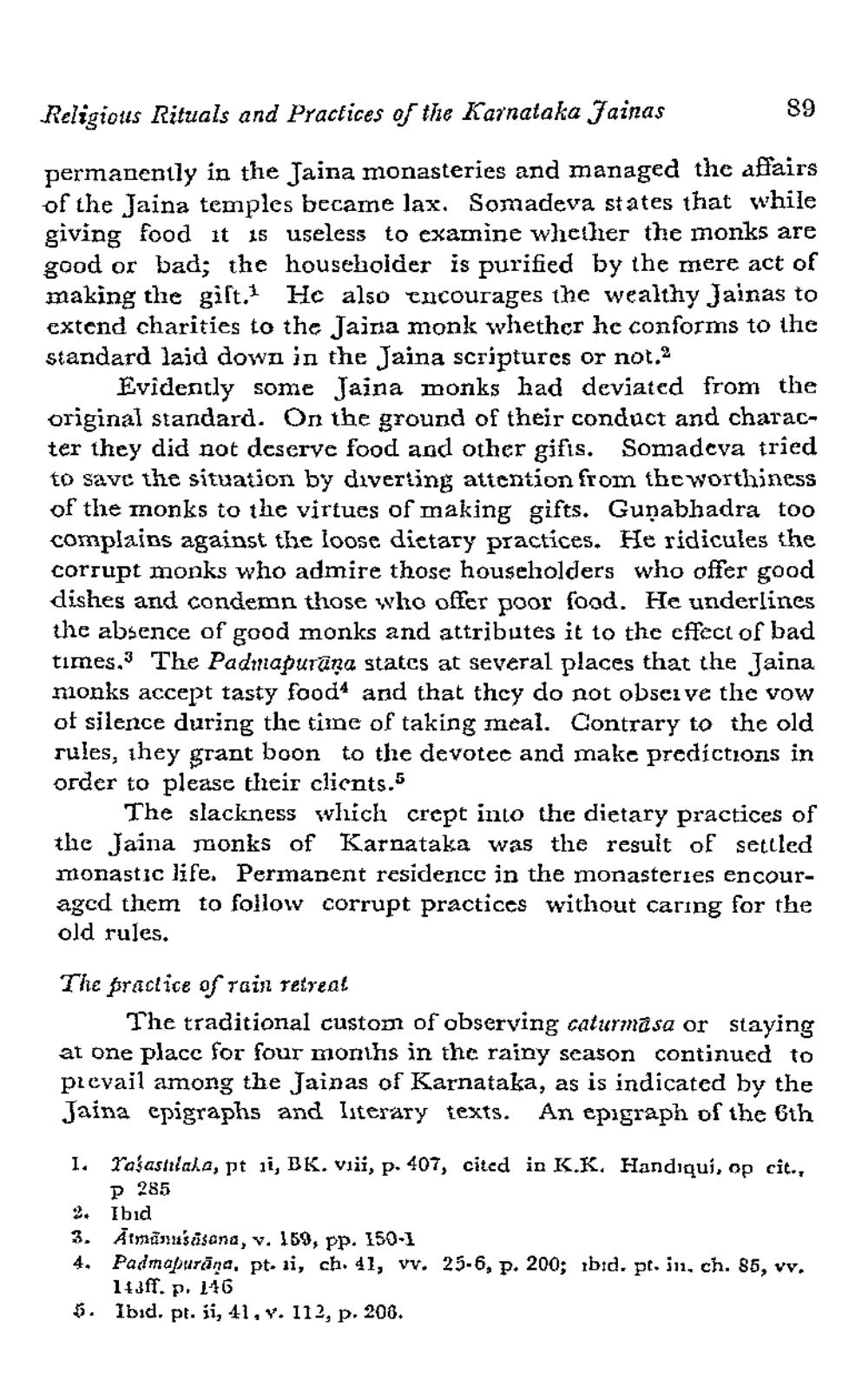________________
Religious Rituals and Practices of the Karnataka Jainas
89
permanently in the Jaina monasteries and managed thc affairs of the Jaina temples became lax. Somadeva states that while giving food it is useless to examine whether the monks are good or bad; the householder is purified by the mere act of making the gift. He also encourages the wealthy Jainas to extend charities to the Jaina monk whether he conforms to the standard laid down in the Jaina scriptures or not.2
Evidently some Jaina monks had deviated from the original standard. On the ground of their conduct and character they did not deserve food and other gifts. Somadcva tried to save the situation by diverting attention from theworthiness of the monks to the virtues of making gifts. Gunabhadra too complains against the loose dietary practices. He ridicules the corrupt monks who admire those householders who offer good dishes and condemn those who offer poor food. He underlines the absence of good monks and attributes it to the effect of bad times. The Padmapurana states at several places that the Jaina monks accept tasty food" and that thcy do not obscive the vow of silence during the time of taking meal. Contrary to the old rules, ihey grant boon to the devotec and make predictions in order to please their clients.5
The slackness which crept into the dietary practices of the Jaina monks of Karnataka was the result of settled monastic life. Permanent residence in the monasteries encouraged them to follow corrupt practices without caring for the old rules.
The pracice of rais retreat
The traditional custom of observing caturmasa or staying at one place for four months in the rainy season continued to prevail among the Jainas of Karnataka, as is indicated by the Jaina cpigraphs and literary texts. An epigraph of the 6th
1. rasasılala, pt ii, BK. viii, p. 407, cited in K.K, Handıquí, op cit.,
P 285 %. Ibid 3. Atmānustisena, v. 169, pp. 150-1 4. Parmapurāna, pt. ai, ch. 41, vv. 25-6, p. 200; ibid. pt. ju, ch. 85, vv.
113ff. p. 146 $. Ibid. pt. ii, 41,7. 112, p. 208.




